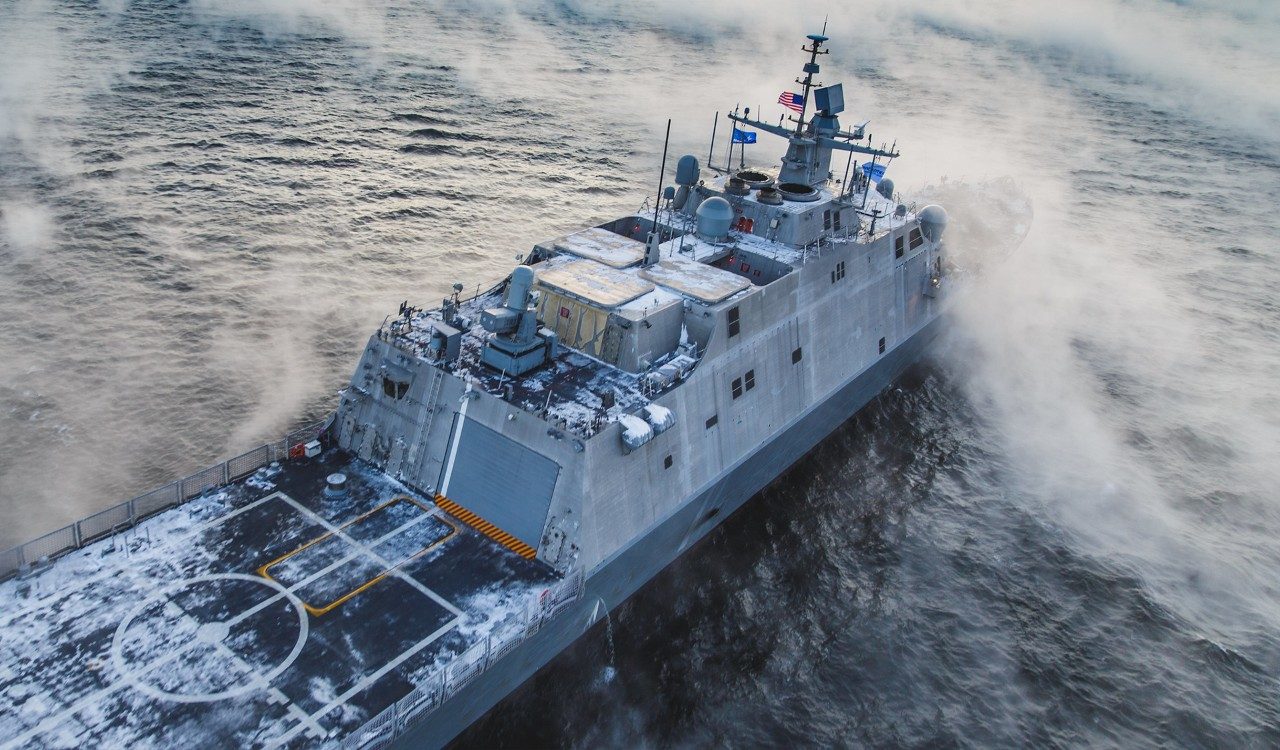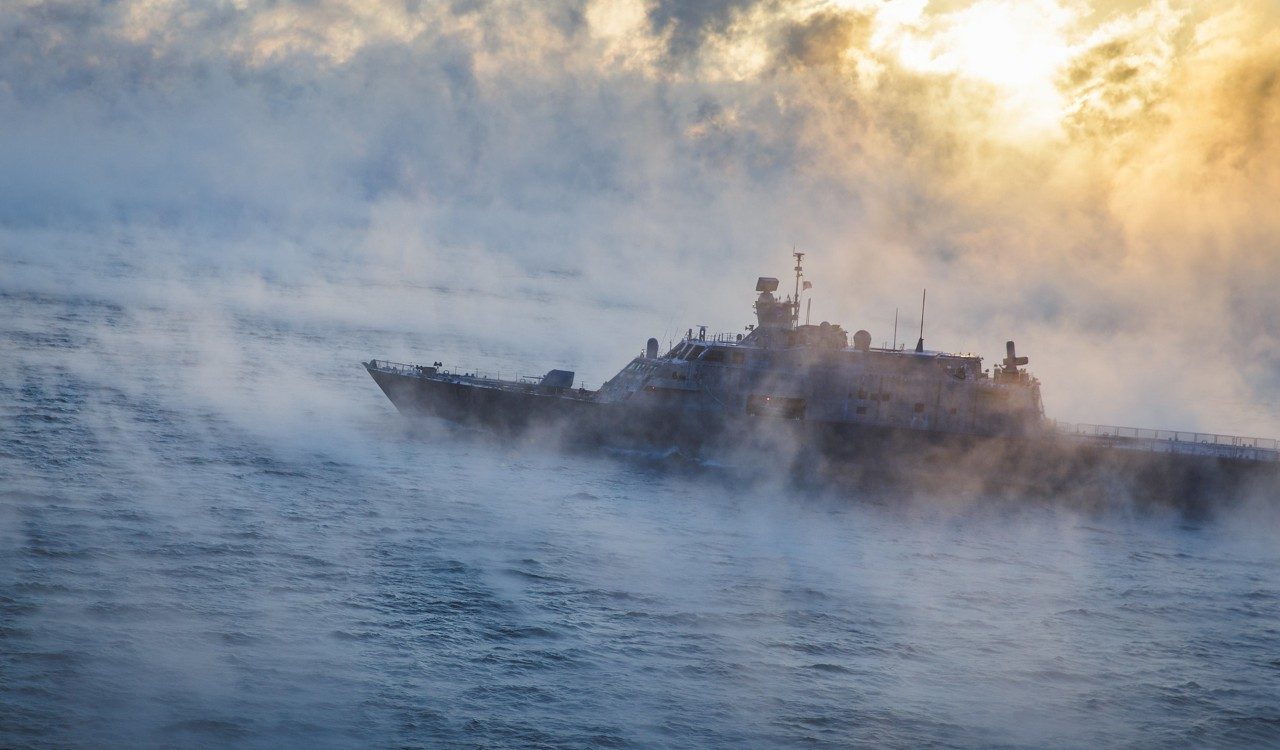If a traditional cruiser or destroyer can be compared to a desktop computer, Lockheed Martin’s Littoral Combat Ship (LCS) is a smartphone.
While certain key features are already installed, what makes LCS unique from any other ship in the U.S. Navy’s fleet is its design, which allows it to easily take on new capabilities – like a smartphone downloading apps.
This flexibility allows the ship to deliver speed to capability to the fleet – a key advantage Lockheed Martin is delivering across our maritime solutions, starting with LCS.
“LCS offers the perfect recipe for speed to capability because it has modularity, open architecture and common U.S. Navy systems,” said Nicole Sanders, Senior Manager, Strategic Programs, Lockheed Martin.
The ship’s open architecture includes three flexible weapon spaces in the top side and a hull that is 40% reconfigurable, making its capabilities easily adaptable to the missions of today and tomorrow.

Particularly advantageous is the LCS Combat Management System, which enables anti-air, anti-surface and integrated anti-submarine warfare capabilities in a small surface combatant platform and connects the LCS to the larger fleet.
“LCS can access places other ships can’t go,” said Joe DePietro, Vice President, Small Combatants and Ship Systems, Lockheed Martin. “But then because the LCS is a node on the network. It can send that information back to those multi-mission ships in order to have that data in their part of the fight.”
The Combat Management System makes use of the Aegis Common Source Library (CSL) – a concept that enables customers to rapidly integrate new capabilities and processes across the fleet in a “build once, use many times” framework.
If LCS is a smartphone, the CSL is the phone’s iOS or operating system.
CSL allows for greater interoperability across the fleet, allowing connections from Aegis-class ships to ships like the LCS, carrying the Combat Management System, and ships like the National Security Cutters, carrying the Command, Communications, Computers, Intelligence, Surveillance and Reconnaissance (C4ISR) system.
While important in carrying out the mission of today, the true advantage of speed to capability is the ability to be ready for the missions of tomorrow.

For the Freedom-variant LCS that means lethality and survivability upgrades which give the ship new features that help the U.S. Navy outpace adversary threats.
Features like next generation electronic warfare capabilities via the Surface Electronic Warfare Improvement Program (SEWIP), an integrated shipboard combat system, and over-the-horizon capability via the Naval Strike Missile, which would give the LCS more than 10 times the range for surface target engagements.
Or Nulka, a rapid response active expendable decoy system that would give the LCS a more effective way to respond to anti-ship missiles and increase commonality across the fleet.
Much like computers and smartphones upgrade to give consumers faster internet, more apps and higher functionality in the commercial market, speed to capability is giving our armed forces the upgrade they need to be successful on the battlefield.




